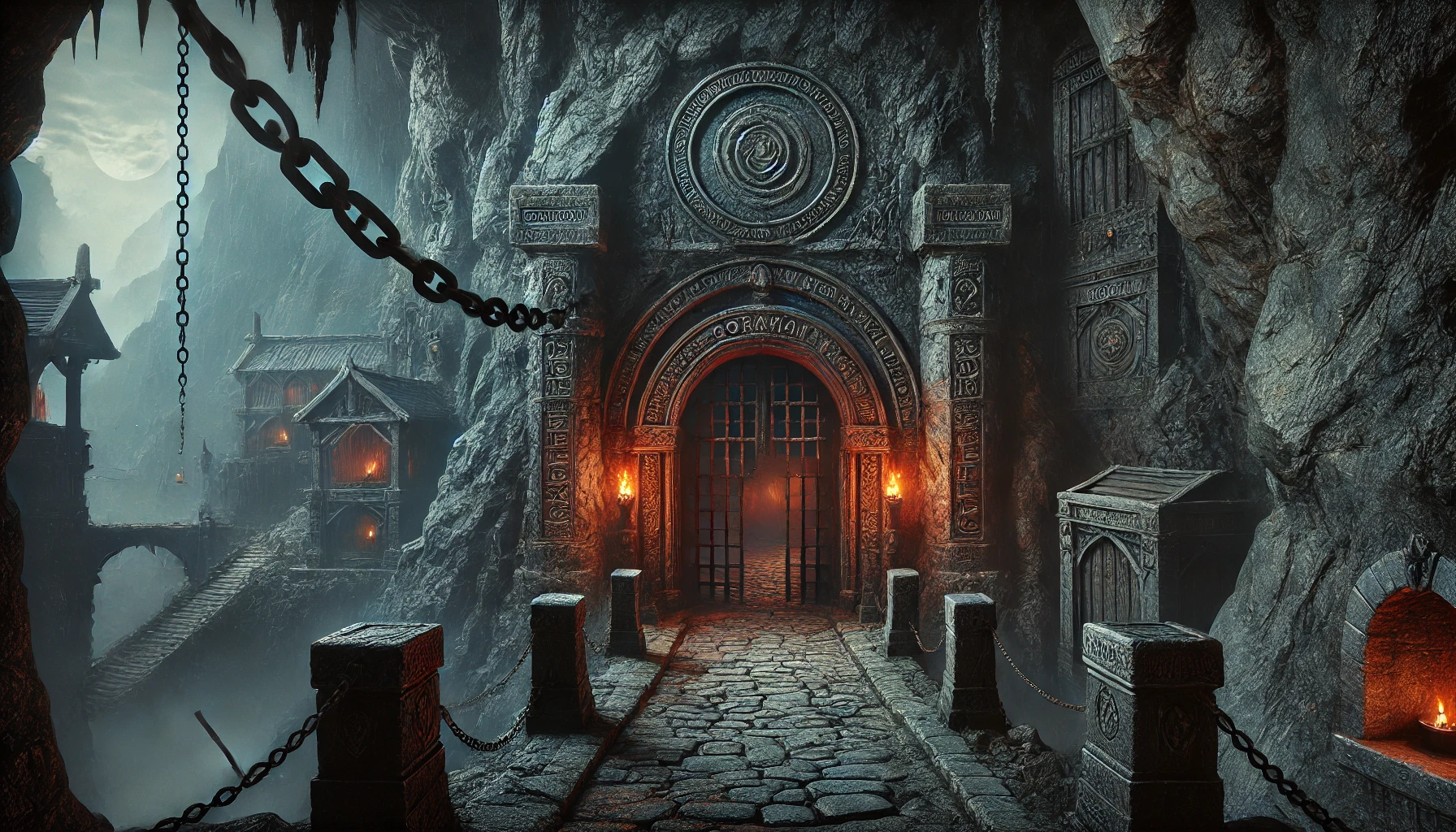
In the eternal darkness of the first tier of the Underdark, northwest of Dergorai, hidden deep within the rock, lies Goramai—a mining settlement where diamonds, shimmering even in the densest gloom, are extracted from stone. Here, there is no sunlight, no celebrations, and no songs of glory. Goramai is a place of labor, oversight, and power, where everyone knows their place in the chain of extraction.
This settlement is neither a city nor a fortress but an enormous, sprawling complex of mines, tunnels, and industrial workshops connected by narrow corridors and massive, reinforced passages. On Goramai’s surface—if the rocky outcroppings of the subterranean plateau can be called that—there are fortified barracks, warehouses, and small residential quarters for the dark dwarves. Everything else consists of damp, shadowed depths where thousands of chained slaves toil to extract precious stones from the earth.
Settlement Structure
Goramai is divided into several key zones, each playing a crucial role in the mine’s operations and daily life.
- Mining Tunnels – Deep tunnels and collapsed shafts where slaves mine diamonds under the watchful eyes of the dark dwarves.
- Overseers’ Barracks – Residences for engineers, appraisers, and managers who stand above the slaves.
- Stone Tithe Warehouses – Reinforced storage chambers where sorted diamonds await the caravans.
- Branding Hall – The place where slaves are marked with Goramai’s seal, forever binding them to the mines.
- Caravan Gates – A massive gateway leading to the guarded path to Dergorai.
Life in Goramai
There are no celebrations in Goramai. No merchants visit, and no music is played. Each day begins with the harsh strike of a gong, signaling the start of the slaves’ shift. Chained together, they descend into the mines, following the dark dwarf engineers who oversee the extraction.
In the mines’ darkness, the air is thick with dampness, stone dust, and blood. The work never ceases—one group of captives replaces another in an unending cycle. Any weakness is punished; slaves who fail to meet quotas vanish, sent into the bottomless mines or the punishing chambers of the quarries.
On the surface, a different order reigns. Dark dwarves calculate earnings, inspect the quality of the mined gems, and negotiate with delegates from Dergorai. Every diamond extracted from Goramai bears the mine’s seal.
Goramai is neither a city nor a fortress—it is a ruthless machine for extracting wealth from the earth. Here, mercy is unknown, weakness is intolerable, and mistakes are unforgivable. Gold flows like a river, but every coin is paid for with sweat, blood, and the broken lives of those who labor in the mines.
Diamond Transportation to Dergorai
Every few days, caravans leave Goramai, taking one of two treacherous routes:
- The Dark Elf Border – The shortest path, but with a high risk of encountering patrols from Menzoberranzan.
- The Wild Lands – A winding, hazardous route filled with underground beasts and natural dangers, but one that attracts little attention from enemies.
Each caravan is accompanied by guards, and sometimes mercenaries, if clashes are expected.
Notable Figures of Goramai
Vragnar “Diamond Eye” – Chief Appraiser
“If a stone isn’t worth gold, then mining it is wasted effort.”
A cold and calculating dwarf whose gaze can distinguish a counterfeit from a true gem in an instant. He personally approves each caravan’s shipment, and his word is law when it comes to evaluating the mine’s yield.
Dragrum “Iron Whip” – Chief Overseer
“A slave is a tool. If it breaks, we replace it.”
One of the cruelest overseers in Goramai. Dragrum enforces discipline, regulates the pace of extraction, and ensures absolute obedience. Any sign of weakness is met with swift punishment—his whip knows only work and retribution.